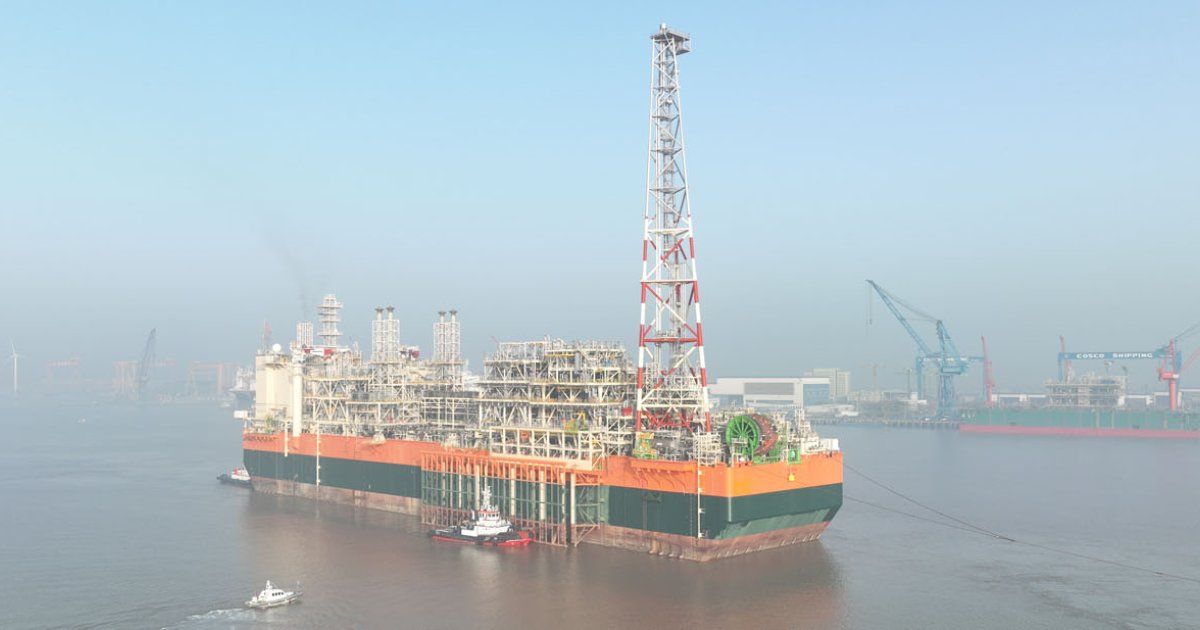FPSO Unit Arrives at bp’s Greater Tortue Ahmeyim LNG Project
Greater Tortue Ahmeyim (GTA) will produce gas from deep water reservoirs, with Phase 1 projected to produce around 2.3 mtpa of LNG per year for more than 20 years.
A floating production, storage, and offloading (FPSO) vessel, operated by bp, has arrived at its offshore destination on the maritime border of Mauritania and Senegal for the GTA Phase 1 LNG development project. The vessel is being moored 40 km offshore at a water depth of 120 m. bp is operating the FPSO on behalf of GTA project partners: Kosmos Energy, PETROSEN, and SMH. The project will extract gas from reservoirs in deep water approximately 120 km offshore through a subsea system.
“bp is investing in today’s energy system - and tomorrow’s too, and GTA Phase 1 represents this investment in action,” said Dave Campbell, bp’s Senior Vice President, Mauritania and Senegal. “The FPSO vessel has travelled halfway around the globe and its safe arrival and installation is testament to the resilience, skills, teamwork and huge effort of all the partners involved. We are now entirely focused on safe completion of the project as we continue to work towards first gas.”
The FPSO was constructed at the COSCO Qidong Shipyard in China and is expected to process over 500 million standard cubic feet of gas per day. It will separate water, condensate, and impurities from the gas prior to transportation via pipeline to a floating LNG (FLNG) vessel at the Hub Terminal approximately 10 km off the coast. The FLNG vessel will cryogenically cool, liquefy, and store the gas before export via LNG carrier or allocation to Mauritania and Senegal.
Sailaway of FPSO vessel for GTA project; Image Credits: Technip Energies

It will have up to 140 people on board during normal operation, with a surface area of 115,200 square feet and a height of approximately 110 feet. The FPSO is comprised of more than 81,000 tons of steel, 37,000 m of pipe spools, and 1.52 million m of cable.
In February 2024, FLNG Gimi arrived at the GTA Phase 1 LNG development project to process the gas for the removal of heavy hydrocarbon components. FLNG Gimi can store up to 125,000 m3 of LNG and is owned and operated by Golar LNG. It traveled over 9,000 nautical miles from Singapore in November 2023, with more than 36 million work hours spent on the vessel’s construction.
bp recently began the start-up of oil production at the ACE platform in the Caspian Sea in April 2024—off the shores of Azerbaijan as part of the Azeri-Chirag-Gunashli (ACG) project. The ACE offshore platform and associated facilities are designed to process up to 100,000 barrels of oil per day (bpd), with the fully operational project slated to produce up to 300 million barrels of oil over its lifetime. ACE is the seventh oil production platform in the ACG field and, with production starting in 1997, the field has produced over 4.3 billion barrels of oil.
Extracted oil will be transported through processing facilities on the platform and then exported approximately 130 km to the onshore Sangachai terminal. The export process will use a new in-field pipeline connected to an existing 30-inch subsea export line. ACE’s initial oil volumes come from the first well that was initiated at the end of 2023. Through 2024, ACE production is expected to increase to around 24,000 bpd as two additional wells are drilled and brought online.